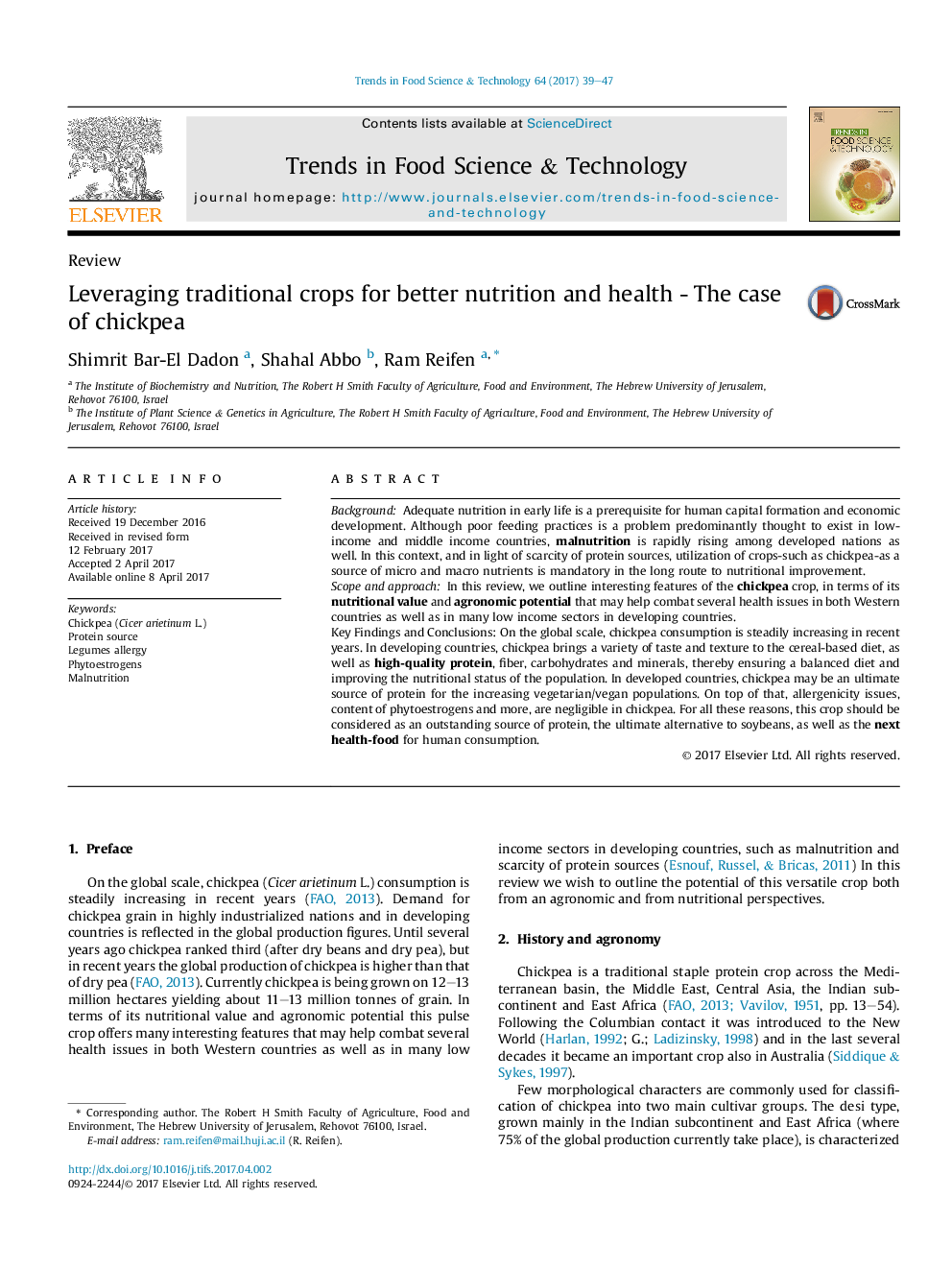| Article ID | Journal | Published Year | Pages | File Type |
|---|---|---|---|---|
| 5523774 | Trends in Food Science & Technology | 2017 | 9 Pages |
â¢The first 1000 days of life are critical for optimal growth and development.â¢Malnutrition is common in developing countries and rising among developed nations.â¢Demand for chickpea grain is constantly increasing.â¢Chickpea is an ideal source of protein for global population.â¢Chickpea consumption ensures a balanced diet and improves nutritional status.
BackgroundAdequate nutrition in early life is a prerequisite for human capital formation and economic development. Although poor feeding practices is a problem predominantly thought to exist in low-income and middle income countries, malnutrition is rapidly rising among developed nations as well. In this context, and in light of scarcity of protein sources, utilization of crops-such as chickpea-as a source of micro and macro nutrients is mandatory in the long route to nutritional improvement.Scope and approachIn this review, we outline interesting features of the chickpea crop, in terms of its nutritional value and agronomic potential that may help combat several health issues in both Western countries as well as in many low income sectors in developing countries.Key Findings and Conclusions: On the global scale, chickpea consumption is steadily increasing in recent years. In developing countries, chickpea brings a variety of taste and texture to the cereal-based diet, as well as high-quality protein, fiber, carbohydrates and minerals, thereby ensuring a balanced diet and improving the nutritional status of the population. In developed countries, chickpea may be an ultimate source of protein for the increasing vegetarian/vegan populations. On top of that, allergenicity issues, content of phytoestrogens and more, are negligible in chickpea. For all these reasons, this crop should be considered as an outstanding source of protein, the ultimate alternative to soybeans, as well as the next health-food for human consumption.
